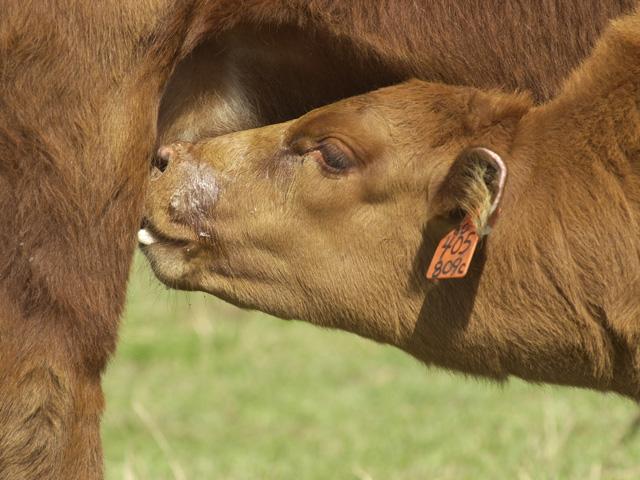Calf Health
Five Ways to Tell if Calves Are Dehydrated
When it comes to calves, producers need to be ready to intervene sooner, rather than later, when it shows signs of dehydration. A dehydrated calf can deteriorate rapidly without help.
"If a calf is nursing and shows a good attitude, it is thriving," said Kansas State University veterinarian Brad White. "If it is laying down and it's not nursing and looking depressed, a producer needs to intervene. It is the degree of dehydration that can be hard to recognize."
P[L1] D[0x0] M[300x250] OOP[F] ADUNIT[] T[]
In their recent podcast, White and fellow KSU veterinarian Brian Lubbers noted that understanding what stage of dehydration a calf is in is key in deciding the best treatment plan. They shared five key takeaways when it comes to evaluating dehydration in calves.
1. Consider the calf's vigor and overall attitude. A dehydrated calf won't stand quickly, and it will show a reduced interest in nursing.
2. Assess the calf's suckle reflex. Do this by placing a finger in the calf's mouth to see how it responds. In well-hydrated calves, the reflex is strong; in dehydrated calves, it becomes weak.
3. Look at the calf's eyes. As a calf becomes dehydrated, the eyeballs pull inward and there is a gap between the eyelid surfaces and the eyeballs.
4. Check the skin tend on the calf by pulling up the skin and releasing it. The more dehydrated, the longer it will take the skin to snap back into place. In a severely dehydrated calf, it can take 10 seconds or more to return to place.
5. Examine the calf's gums and the mucous membranes. In a hydrated calf, they are moist, but they become sticky when dehydration sets in. When you press on the membrane of a well-hydrated calf, it will return to its original color quickly. A dehydrated calf will be slow to return to its normal color. This is called "capillary refill time," but it doesn't work on calves with black-pigmented gums.
Contact your veterinarian for advice on how best to treat dehydration and amounts of fluid to use. The general rule is that if the calf will stand and suck, oral fluids (good-quality electrolytes) will probably be enough to help the calf rehydrate. If the calf is more seriously dehydrated, an IV may be needed. Dehydration often accompanies scours in calves, and the younger a calf is, the more quickly it will dehydrate with scours because it lacks the reserves of older animals.
(c) Copyright 2022 DTN, LLC. All rights reserved.






